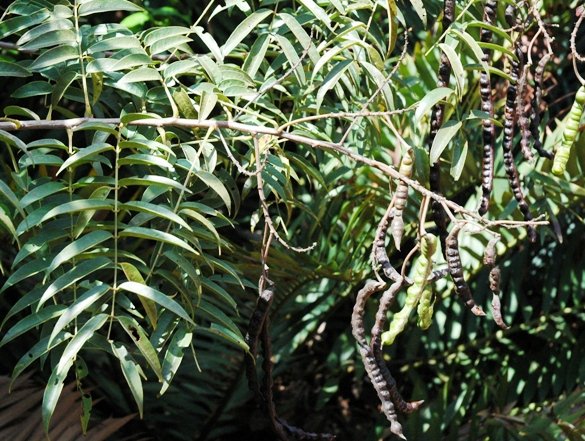Senna petersiana

Author: Ivan Lätti
Photographer: Johan Wentzel
Senna petersiana, commonly known as the eared senna or in Afrikaans as apiespeul (little monkeys pod), is a shrub or small tree reaching heights from 4 m to 7 m (SA Tree List No. 213). It was for long known as Cassia petersiana.
The alternate leaves are paripinnate, i.e. compound without a terminal leaflet. There are glands on the rachis and large, leaf-like stipules at the base of the petioles. These stipules gave rise to the trees common name of eared senna. The leaflet shape is lanceolate with asymmetric curvature and acutely attenuating tips as in the photo.
The fruit is a slender, pendulous pod with slight constrictions forming transverse partitions between its many seeds. The dark brown pod does not dehisce when ripe. There is a marked hairy rim around the circumference. The long pods may measure about 25 cm in length, only 1 cm wide.
The species distribution is in the north of KwaZulu-Natal in Maputaland and in the Mpumalanga and Limpopo Lowveld, roughly the area of the Kruger National Park.
The habitat is riverine fringe thicket. The species is not considered to be threatened in its habitat early in the twenty first century.
A butterfly known as the African vagrant and scientifically called Catopsilia florella breeds in this tree (Coates Palgrave, 2002; Schmidt, et al, 2002; http://redlist.sanbi.org).

